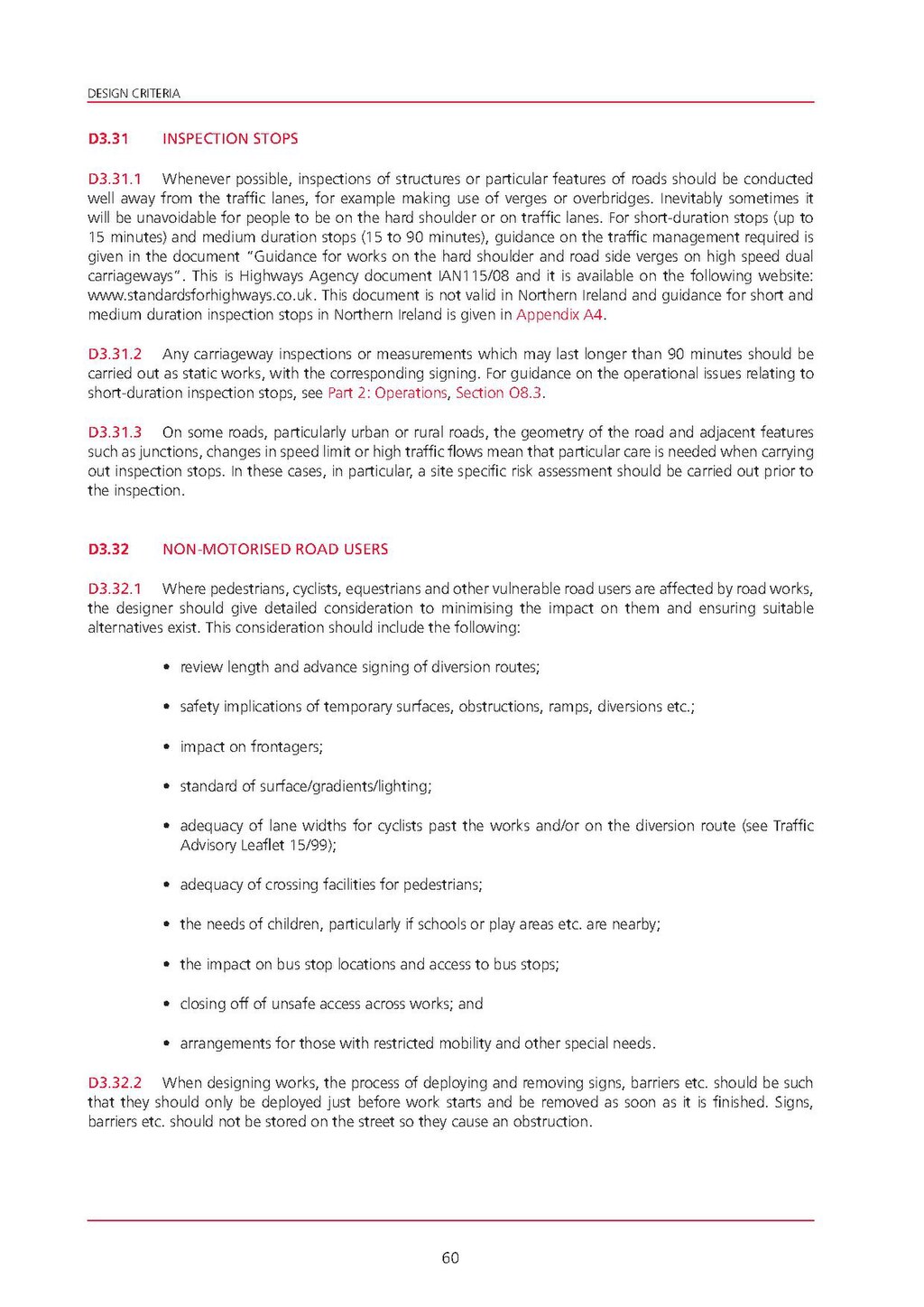D3.31INSPECTION STOPS
D3.31.1 Whenever possible, inspections of structures or particular features of roads should be conducted well away from the traffic lanes, for example making use of verges or overbridges. Inevitably sometimes it will be unavoidable for people to be on the hard shoulder or on traffic lanes. For short-duration stops (up to 15 minutes) and medium duration stops (15 to 90 minutes), guidance on the traffic management required is given in the document "Guidance for works on the hard shoulder and road side verges on high speed dual carriageways". This is Highways Agency document IAN115/08 and it is available on the following website: www.standardsforhighways.co.uk. This document is not valid in Northern Ireland and guidance for short and medium duration inspection stops in Northern Ireland is given in Appendix A4.
D3.31.2 Any carriageway inspections or measurements which may last longer than 90 minutes should be carried out as static works, with the corresponding signing. For guidance on the operational issues relating to short-duration inspection stops, see Part2: Operations, Section O8.3.
D3.31.3 On some roads, particularly urban or rural roads, the geometry of the road and adjacent features such as junctions, changes in speed limit or high traffic flows mean that particular care is needed when carrying out inspection stops. In these cases, in particular, a site specific risk assessment should be carried out prior to the inspection.
D3.32NON-MOTORISED ROAD USERS
D3.32.1 Where pedestrians, cyclists, equestrians and other vulnerable road users are affected by road works, the designer should give detailed consideration to minimising the impact on them and ensuring suitable alternatives exist. This consideration should include the following:
- review length and advance signing of diversion routes;
- safety implications of temporary surfaces, obstructions, ramps, diversions etc.;
- impact on frontagers,
- standard of surface/gradients/lighting;
- adequacy of lane widths for cyclists past the works and/or on the diversion route (see Traffic Advisory Leaflet 1 5/99),
- adequacy of crossing facilities for pedestrians,
- the needs of children, particularly if schools or play areas etc. are nearby;
- the impact on bus stop locations and access to bus stops,
- closing off of unsafe access across works; and
- arrangements for those with restricted mobility and other special needs.
D3.32.2 When designing works, the process of deploying and removing signs, barriers etc. should be such that they should only be deployed just before work starts and be removed as soon as it is finished. Signs, barriers etc. should not be stored on the street so they cause an obstruction.
60
